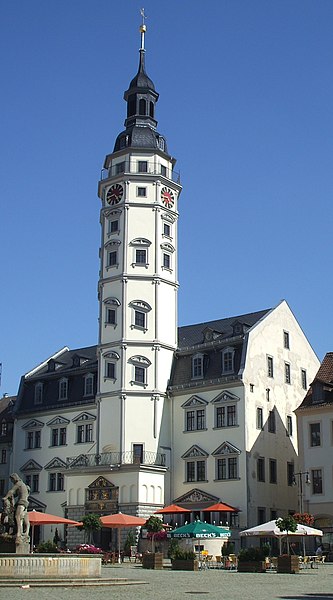
Stellenangebote fϋr Ärzte in Thuringen - Deutschland
Stellenangebote fϋr Ärzte in Thuringen - Deutschland
| Arzt | Assistenzarzt | Facharzt | Oberarzt |
|---|---|---|---|
| Allgemeinmedizin | 0 | 0 | 0 |
| Innere Medizin | 0 | 0 | 0 |
| Pneumologie | 1 | 0 | 0 |
| Kardiologie | 0 | 0 | 0 |
| Gastroenterologie | 0 | 0 | 1 |
| Endokrinologie und Diabetologie | 0 | 0 | 0 |
| Rheumatologie | 0 | 0 | 0 |
| Angiologie | 0 | 0 | 0 |
| Nephrologie | 0 | 0 | 0 |
| Hämatologie | 0 | 0 | 0 |
| Onkologie | 0 | 0 | 0 |
| Geriatrie | 0 | 0 | 0 |
| Neurologie | 1 | 1 | 1 |
| Haut- und Geschlechtskrankheiten | 0 | 0 | 0 |
| Kinder- und Jugendmedizin | 1 | 0 | 0 |
| Psychiatrie und Psychotherapie | 0 | 0 | 0 |
| Physikalische und Rehabilitative Medizin | 0 | 0 | 0 |
| Anästhesiologie | 1 | 1 | 0 |
| (Allgemeine) Chirurgie | 0 | 0 | 0 |
| Gefäßchirurgie | 1 | 1 | 0 |
| Herzchirurgie | 1 | 0 | 0 |
| Thoraxchirurgie | 0 | 0 | 0 |
| Kinderchirurgie | 0 | 0 | 0 |
| Orthopädie und Unfallchirurgie | 0 | 0 | 0 |
| Neurochirurgie | 0 | 0 | 0 |
| Augenheilkunde | 0 | 0 | 0 |
| Frauenheilkunde und Geburtshilfe | 0 | 0 | 0 |
| Hals-Nasen-Ohrenheilkunde | 0 | 0 | 0 |
| Urologie | 0 | 0 | 0 |
| Radiologie | 0 | 0 | 0 |
| Strahlentherapie | 0 | 0 | 0 |
| Pathologie | 0 | 0 | 0 |
| Notfallmedizin | 0 | 0 | 0 |
| Arbeitsmedizin | 0 | 0 | 0 |
| Kinder- und Jugendpsychiatrie und -psychotherapie | 0 | 0 | 0 |
| Zahnheilkunde | 0 | 0 | 0 |
| RMO | 0 | 0 | 0 |
| Psychosomatische Medizin | 0 | 0 | 0 |
| Nuklearmedizin |
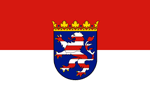
Interested in learning more about Thüringen? Click below to read the description and find out more about:
Thuringen - Deutschland

Interested in learning more about Thüringen? Click below to read the description and find out more about:
The free state of Thüringen is located in the central part of Germany. From the northwest going clockwise, Thüringen has borders with the states of Lower Sachsen, Sachsen-Anhalt, Sachsen, Bayern and Hessen. Thüringen is the sixth smallest by area and the fifth smallest by population of Germany´s sixteen states. Its capital city is Erfurt.

Erfurt cathedral and Severikirche

Erfurt Town Hall
Thüringen has been known by the nickname of ´´the green heart of Germany´´, from the late 19th century, due to the dense forest that covers the terrain. The ridges of the western Harz Mountains divide the region from Lower Sachsen on the north-west, while the eastern Harz similarly separates Thüringen from the state of Sachsen-Anhalt to the north-east. To the south and southwest, the Thüringen Forest effectively separates the ancient region of Franconia, now the northern part of Bavaria, from the rolling plains of most of Thüringen. The central Harz range extends southwards along the western side into the northwest corner of the Thüringen Forest region, Making Thüringen a lowland basin of rolling plains nearly surrounded by ancient somewhat-difficult mountains. To the west across the mountains and south is the drainage basin on the Rhine River.

Thüringen forest north of Schweinfurt
After the capital city of Erfurt, important urban districts are Eisenach, Gera, Jena, Suhl and Weimar.


Eisenach Nikolai Chuch, Luther House

Gera, view from above and Town hall
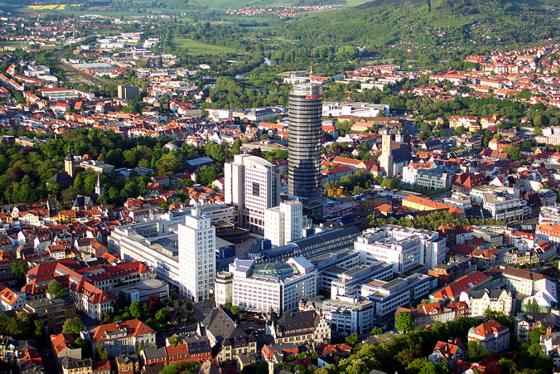
Jena

Suhl from above


Grand-Ducal Palace Weimar, Goethe Schiller monument Weimar

Belvedere Castle Weimar
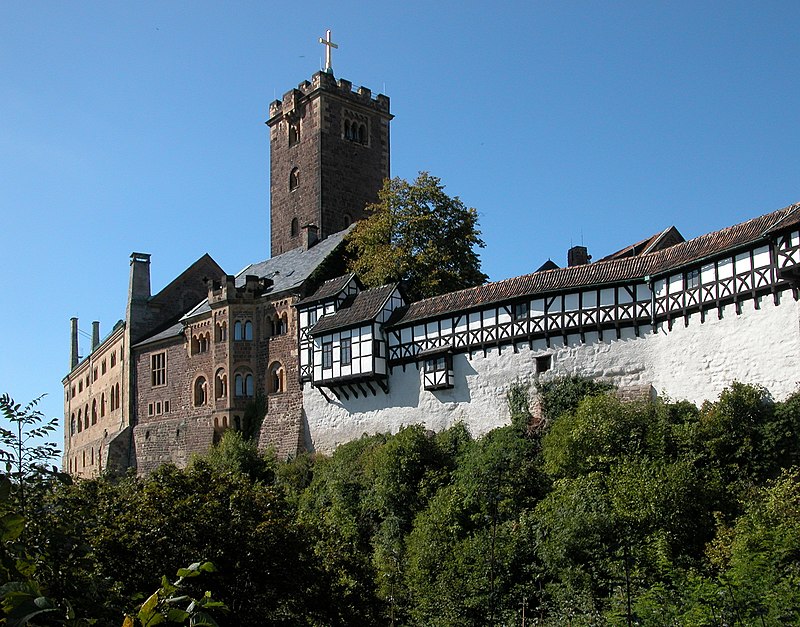
Wartburg Castle


Bibra Castle, Ehrenburg Castle


Goethe National Museum Weimar

The Widow´s Palace

The Duchess Anna Amalia Library
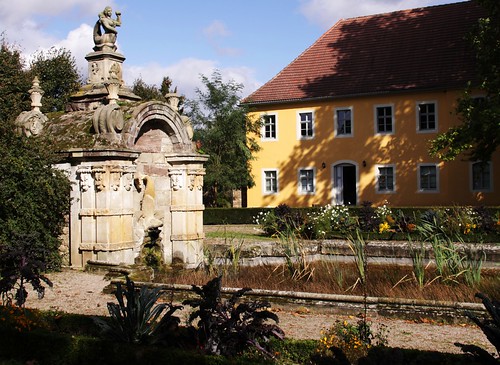
Wieland Estate in Ossmannstedt

Buchenwald concentration camp entrance

Mittelbau-Dora concentration camp
.jpg)

Theater Gera and Altenburg

Theater interior Altenburg
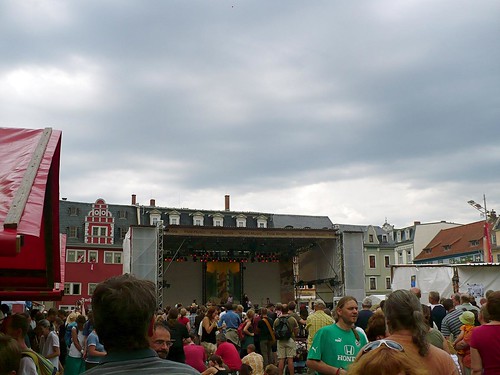
TFF Rudolstadt Roots Folk World Music Festival
Cakes also play an important role in Thüringen´s culinary traditions. They are found at every breakfast table, they are central to every coffee break and they are even offered to party guests as a midnight snack. However, unlike other regions in Germany, Thüringen mainly offers sheet cakes (Blechkuchen).
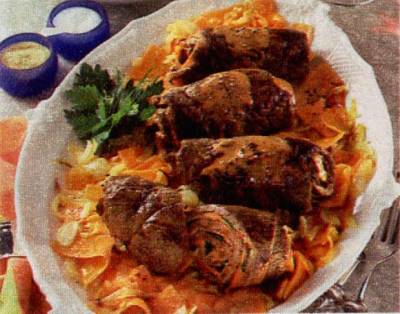

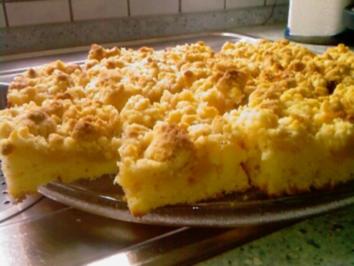
Rinderrouladen, Thüringer Klöße, Blechkuchen
One of the world renowned optics manufacturers, Carl Zeiss AG, has subsidies in Jena. Carl Zeiss is one of the oldest existing optics manufacturers in the world. Now over 150 years old, Zeiss continues to be associated with expensive and high-quality optical lenses. Zeiss lenses are generally thought to be elegant and well-constructed, yielding high-quality images.
Zeiss and its subsidiaries offer a wide range of products related to optics and vision. These include camera and cine lenses, microscopes and microscopy software, binoculars and spotting scopes, eyeglasses and lenses, planetariums and dome video-systems, optics for military applications (head tracker systems, submarine periscopes, targeting systems), optical sensors, industrial metrology systems and ophthalmology products.

Carl Zeiss AG. Jena 1910



Saxony and Thüringen are the strongest eastern German federal states. The regional GDP in 2008 was €49.8b. Between 1995 and 2006, the Thüringen GDP/inhabitant evolved from €14,502.6 to €19,782.1.
Erfurt, Weimar and other towns in Thüringen offer visitors an engaging mix of history and tradition, culture and leisure activities, the classical and the modern. In Weimar, the 1999 European City of Culture, there´s hardly anywhere that doesn´t in some way reflect the town´s rich heritage.
For many years, visitors from around the world have flocked to the statue of Goethe and Schiller in front of the German National Theater and to a total of 27 museums. The UNESCO World Heritage site ´Classical Weimar´ comprises 16 individual buildings.

Statue of Goethe and Schiller in Weimar



Friedenstein Palace in Gotha
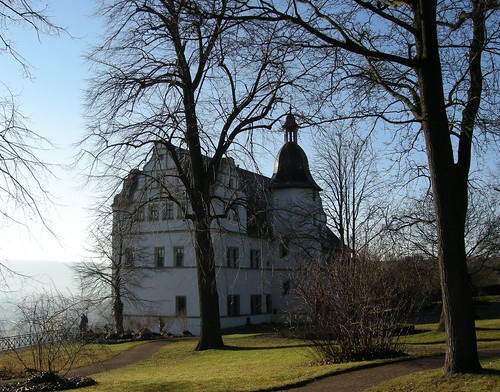

Dornburg Palace










